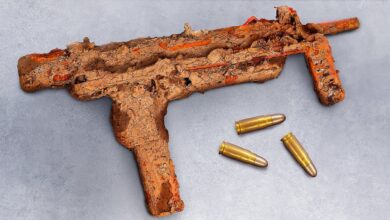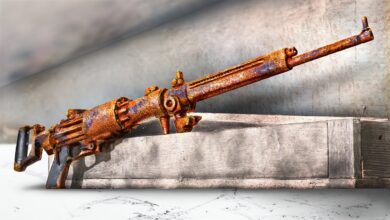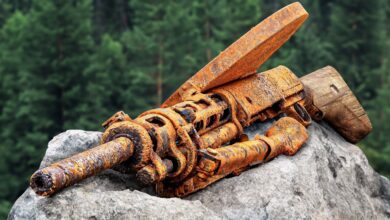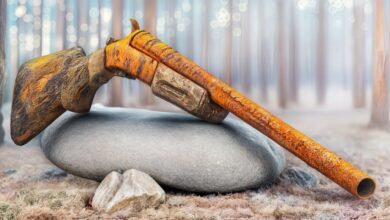Restoring an Old Rusty Pistol: A Guide to Bringing New Life to a Forgotten Weapon
Restoring an old rusty pistol can be a rewarding and satisfying experience, whether you’re an experienced gunsmith or a hobbyist looking to preserve a piece of history. Over time, metal surfaces, exposed to the elements, can become corroded, turning into a pitted, rusted mess that seems irreparable. However, with the right tools, patience, and attention to detail, it is possible to restore an old firearm to working condition while maintaining its historical value.
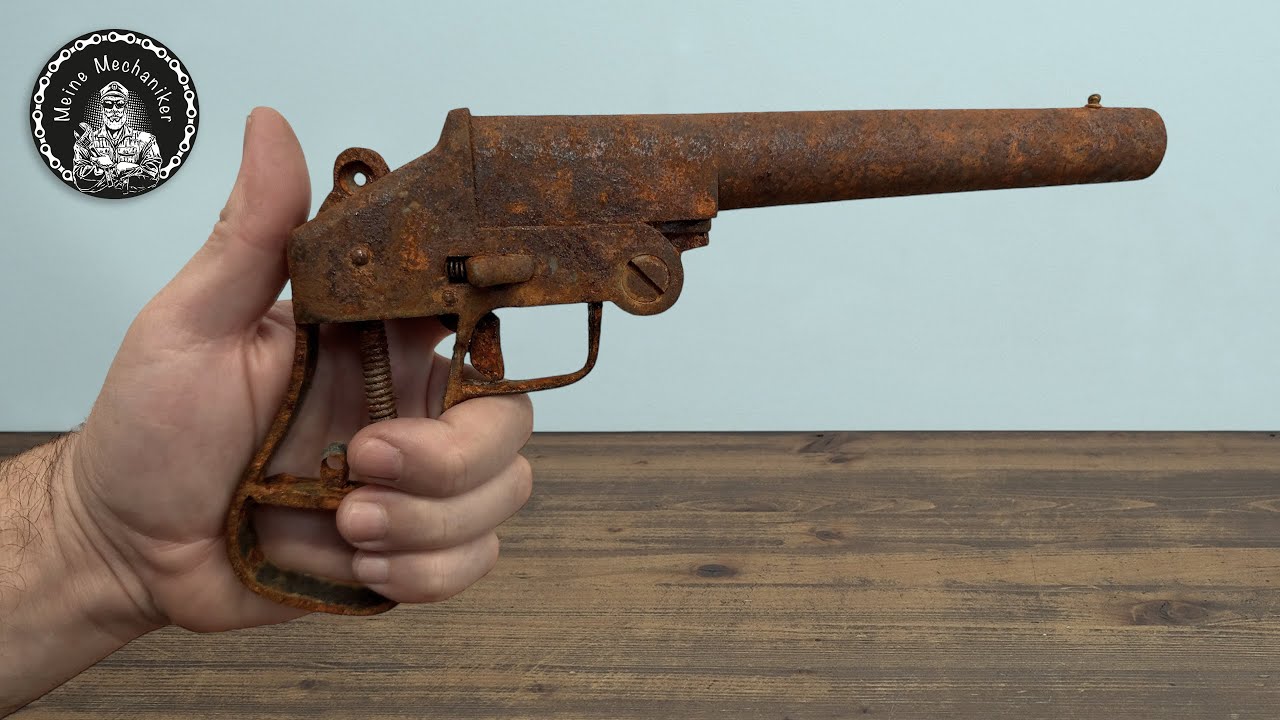
1. Assess the Condition of the Pistol
Before diving into the restoration process, it’s important to carefully assess the pistol’s overall condition. Take note of any rust, corrosion, wear, and missing parts. Examine the frame, barrel, hammer, trigger, and other components for damage. If the rust is purely surface-level, restoration will be much easier than if it has caused deeper pitting or structural damage. Also, ensure the firearm is unloaded and safe to handle before starting any work.
2. Disassemble the Pistol
To effectively restore an old pistol, disassembling it is a necessary step. This allows for better access to the rusted areas and ensures that delicate internal components do not get damaged during the cleaning process. Use the proper tools to take apart the firearm, and take care to document the order in which parts are removed for easier reassembly later on.
3. Removing Rust from the Exterior
The most critical part of restoring a rusty pistol is removing the corrosion that has built up over time. Rust removal can be done in several ways, depending on the severity of the rust and the finish of the pistol:
-
Wire Brush or Steel Wool: For light surface rust, a wire brush or steel wool can be effective. It’s a good idea to use these tools gently and in small circular motions to avoid damaging the metal or removing too much material. Steel wool in fine grades (0000) can be used to polish the metal once the rust is gone.
-
Rust Remover Solution: If the rust is more extensive, using a rust remover solution can be very helpful. Products like naval jelly or specialized rust removers can break down rust without harming the underlying metal. Always follow the manufacturer’s instructions and wear protective gloves and eyewear while handling these chemicals.
-
Electrolytic Rust Removal: For advanced cases, electrolytic rust removal can be employed. This technique involves submerging the rusty parts in a solution of water and baking soda while using an electric current to remove the rust. This process can effectively remove rust without scratching or damaging the metal.
-
Manual Polishing: Once the rust is removed, you may want to polish the metal to restore its shine. This can be done using a fine-grit sandpaper or polishing compound. Always be cautious not to over-polish, as it can affect the pistol’s appearance and value.
4. Cleaning Internal Components
After dealing with the exterior rust, it’s essential to focus on the internal components, such as the trigger mechanism, hammer, and firing pin. Rust in the internal components can hinder the functionality of the pistol, and cleaning them is crucial for the firearm’s overall performance.
-
Gun Cleaning Solvents: Use a dedicated firearm cleaning solvent to break down any dirt, grime, or oil buildup inside the pistol. Apply the solvent to the various parts, let it sit for a few minutes, and then scrub them with a soft brush or rag. Be thorough in cleaning areas like the chamber and barrel.
-
Lubrication: Once the internal parts are cleaned, apply the appropriate lubricant or oil to keep them functioning smoothly. Lubrication helps reduce friction, prevent further rusting, and maintain the longevity of the pistol’s parts.
5. Repair or Replace Damaged Parts
In many cases, the rust will have damaged parts of the pistol beyond repair. This is especially common with the springs, firing pins, and other small components. If this is the case, it’s important to source replacement parts. Original parts might be available from antique gun dealers, or you can use modern equivalents, though it’s important to ensure compatibility to maintain the pistol’s integrity.
If parts are severely corroded or broken, you might need to seek professional help. Gunsmiths can fabricate or source replacement parts and install them for you.
6. Reassembly and Function Testing
After cleaning, polishing, and replacing any damaged components, it’s time to reassemble the pistol. Ensure that all parts are properly fitted and secured in their correct positions. Once assembled, perform a function test to ensure that the pistol operates correctly. This includes checking the trigger mechanism, safety, hammer, and firing pin operation. If everything works smoothly, you’ve successfully restored your rusty pistol!
7. Finishing Touches
For those looking to give the pistol an aesthetically pleasing finish, you can apply a new bluing or parkerizing finish. Bluing helps protect the metal from future rust while giving it a dark, glossy look. If the pistol has historical significance, you may wish to maintain its original patina, as it adds character and value.
Alternatively, you may choose to leave the firearm with a more rustic appearance, preserving its authenticity. The finish is a personal choice and should align with the intended use and value you place on the firearm.
8. Safety Considerations
Before using the restored pistol, it’s critical to ensure that the firearm is safe to fire. Even if the gun looks great on the outside, internal components such as the firing pin, springs, and the barrel should be thoroughly inspected for any damage that could affect its function. It’s a good idea to have a certified gunsmith perform a final safety check before shooting the restored firearm.
Conclusion
Restoring an old, rusty pistol requires time, patience, and attention to detail, but the process can be incredibly rewarding. Whether you’re restoring the firearm for historical preservation or to bring it back to working condition, following the proper steps ensures that the pistol remains safe, functional, and aesthetically pleasing. By removing rust, cleaning, replacing damaged components, and applying a new finish, you can breathe new life into an old firearm, preserving its history for future generations.

